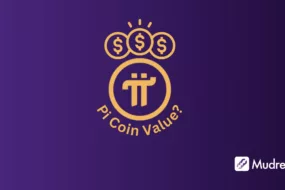
Getting Funds Back from FTX: Is it Possible?
The collapse of FTX sent shockwaves through the cryptocurrency community, leaving many investors questioning the fate of their locked assets. As the dust settles, affected users must understand the current status of their funds and the recovery process. What’s the current status of funds for those who had assets locked in FTX? The unfolding legal and claims processes will play a pivotal role in determining whether investors can reclaim any of their lost investments.
Key takeaways:
- FTX Collapse: What Happened?
- Ongoing Legal Proceedings and Asset Recovery
- Will You Get Your Funds Back?
- Previous Cases: What Can We Learn?
- What Should FTX Users Do Now?
FTX Collapse: What Happened?
FTX, once a leading cryptocurrency exchange, experienced a rapid and catastrophic collapse in November 2022. The downfall was primarily due to mismanagement of funds, lack of transparency, and a severe liquidity crisis. FTX’s sister company, Alameda Research, heavily relied on FTX’s native token, FTT, leading to a significant devaluation when investors lost confidence.
The situation worsened as FTX halted withdrawals, causing panic among users. This led to a massive sell-off, further plummeting the value of FTT and other cryptocurrencies. The mismanagement and lack of transparency eroded trust, and the exchange’s inability to meet withdrawal requests left users’ funds inaccessible.
The bankruptcy filing revealed that FTX owed over $3 billion to its top 50 creditors and had liabilities ranging from $10 billion to $50 billion. The collapse not only affected FTX users but also had a ripple effect across the cryptocurrency industry, highlighting vulnerabilities in the market.
On November 11, 2022, FTX filed for bankruptcy, leaving millions of dollars in customer assets locked away and inaccessible. Many users were left in the dark regarding the status of their funds, amplifying the distress felt by investors. The bankruptcy proceedings initiated a complex legal process aimed at recovering lost funds, but the timeline for user reimbursements remains uncertain.
For updates on the claims process and potential recovery of funds, users are advised to regularly check the FTX Customer Claims Portal, alongside official statements from the bankruptcy court and verified news outlets.
Ongoing Legal Proceedings and Asset Recovery
As of 2024, FTX’s legal proceedings remain a complex and evolving situation. The bankruptcy court has been overseeing the restructuring process, which includes ongoing hearings to address various creditor claims and the liquidation of the company’s assets. These hearings aim to establish the most equitable approach for distributing the remaining assets among creditors, including individual users whose funds are locked in the exchange.
In cases like FTX’s bankruptcy, asset recovery follows specific legal protocols. Creditors have distinct rights based on their classification, which influences the priority of repayment. Typically, secured creditors—those with collateral backing their loans—are paid first, followed by unsecured creditors, which may include individual users and vendors. This prioritization is crucial for understanding who will receive funds and when.
The asset recovery process involves identifying and liquidating any remaining assets, which can include cash reserves, cryptocurrencies, and company property. The court has been working to ascertain the total value of these assets to determine how much can be distributed to creditors.
Important milestones in this process include the approval of interim recovery plans and any updates regarding the sale of FTX’s assets. For instance, the bankruptcy trustee may announce specific recovery timelines, clarifying when creditors can expect potential payments.
ALSO READ: Top Cryptocurrencies to Avoid in October 2024
Will You Get Your Funds Back?
The possibility of recovering funds from the FTX collapse largely hinges on several critical factors, including the amount of assets that can be recovered, the outcomes of ongoing court rulings, and the classification of the assets involved. As the bankruptcy proceedings unfold, users are left wondering about the likelihood of full, partial, or even no recovery of their investments.
Recovery Scenarios
- Full Recovery: This scenario is contingent upon the successful liquidation of FTX’s assets and an efficient claims process. If the court determines that the liquidated assets are sufficient to cover all creditors’ claims, users might see a full return of their funds. However, this outcome is currently viewed as optimistic, given the extensive losses the exchange has reported.
- Partial Recovery: A more probable scenario for many users involves partial recovery of funds. This may occur if FTX can liquidate its assets, but the total value falls short of covering all claims. In this case, users may receive a percentage of their initial investment based on the available funds post-liquidation and distribution priorities established by the court.
- No Recovery: Unfortunately, some users may face the harsh reality of no recovery, especially if the liquidated assets do not cover outstanding liabilities. This scenario could be exacerbated for those with higher-risk assets, like cryptocurrencies, which can fluctuate significantly in value.
Key Uncertainties
Several uncertainties impact the recovery timeline and amounts. Recovery efforts can take months or even years, depending on the complexity of the bankruptcy proceedings, court rulings, and the speed of asset liquidation. Moreover, the class of assets involved plays a crucial role; for example, cash balances may be easier to recover than cryptocurrency holdings, which may require additional legal scrutiny and valuation.
Understanding these factors can empower users to navigate the uncertainty surrounding their funds more effectively.
Previous Cases: What Can We Learn?
The collapse of FTX is not an isolated incident in the cryptocurrency world; it echoes previous cases such as Mt. Gox and Celsius, where users faced significant challenges in recovering their funds. Analyzing these cases can provide valuable insights for FTX creditors who are navigating their own recovery process.
Mt. Gox: A Cautionary Tale
Mt. Gox was one of the first major cryptocurrency exchanges to experience a catastrophic collapse, declaring bankruptcy in 2014 after losing approximately 850,000 Bitcoins to hacking and mismanagement. Users initially faced a lengthy claims process, with many waiting years to see any form of reimbursement. Ultimately, a portion of the lost funds was recovered, and the repayment process began, but only a fraction of creditors received full compensation. This case highlighted the importance of regulatory oversight and user vigilance in choosing exchanges.
Celsius: Legal Challenges and Recovery
In contrast, Celsius filed for bankruptcy in 2022 amid allegations of mismanagement and insolvency, impacting a large number of users who had deposited funds. The company has been working to recover its assets through various strategies, including liquidation and restructuring efforts. However, the payout timeline remains uncertain, with some creditors receiving only partial refunds. Celsius users have been urged to keep up with the bankruptcy proceedings to understand their rights and the potential for fund recovery.
Lessons for FTX Creditors
Several lessons can be drawn from these cases for FTX creditors –
- Be Patient: Recovery processes can be lengthy and complex, often taking months or even years.
- Stay Informed: Regularly check for updates from the FTX claims portal and legal resources to stay abreast of developments and potential timelines.
- Know Your Rights: Understanding the legal landscape and creditor rights can empower users to navigate the claims process more effectively.
- Diversification: While this doesn’t apply directly to the claims process, diversifying holdings across multiple platforms can mitigate risks in future investments.
For more detailed information, users can consult official FTX updates and follow reliable news sources for ongoing coverage.
ALSO READ: What Is SAFU and Why Do You Need it?
What Should FTX Users Do Now?
As FTX users navigate the aftermath of the exchange’s collapse, taking proactive steps is crucial for potential fund recovery. Here are some actionable measures to consider –
1. File Your Claim
The first step for affected users is to file a claim through the FTX Claims Portal. This portal serves as the primary platform for submitting claims regarding locked funds. Ensure you gather all necessary documentation, including account history and transaction records, to support your claim.
2. Monitor Legal Updates
Stay informed about ongoing legal proceedings and updates related to FTX’s bankruptcy case. Regularly check the FTX official website and follow reliable news outlets such as CoinDesk and The Block for the latest developments. Key announcements may provide insights into recovery timelines and processes.
3. Consult Financial Advisors
Consider consulting with financial advisors who specialize in cryptocurrency or bankruptcy law. They can provide personalized guidance on navigating the claims process and understanding your rights as a creditor.
4. Explore Official Resources
Utilize official resources, such as court-appointed trustees and legal aid organizations, to explore further avenues for recovery. The U.S. Bankruptcy Court website offers information on bankruptcy cases and resources that may be beneficial.
By staying informed and taking these steps, FTX users can position themselves for the best possible outcome in the challenging landscape following the exchange’s collapse.
Conclusion
The uncertainty surrounding fund recovery for FTX users remains significant and is influenced by ongoing legal proceedings, asset liquidation, and prioritization of creditors. As affected individuals navigate this complex process, it’s essential to stay informed and patient. Regularly check official updates and resources and engage with financial advisors as needed. By remaining proactive and educated, users can better manage their expectations as the situation develops.
FAQs
Did FTX pay everyone back?
No, FTX has not paid back all its customers. Due to the company’s bankruptcy and the legal complexities involved, many customers are still waiting to see if they will be repaid and to what extent.
Will FTX victims get their money back?
The recovery of funds for FTX victims is uncertain and depends on various factors, including court rulings, the liquidation of FTX assets, and the priority of creditors. Some users may receive full or partial reimbursements, while others might not recover any funds.
Have FTX customers been repaid?
FTX customers have not received full repayments. The bankruptcy process is ongoing, and customers need to follow legal updates and the claims process to determine if they will receive any compensation.





